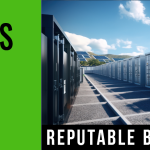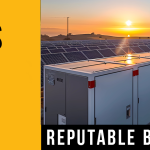 Electric vehicles could become a vital asset for California grid operators who are struggling to bring more renewables online. The state’s rapid adoption of solar power is contributing to a problem known as the “duck curve” — a deep dip in demand during solar-saturated midday hours, followed by a steep ramp in the evening as solar power fades away.
Electric vehicles could become a vital asset for California grid operators who are struggling to bring more renewables online. The state’s rapid adoption of solar power is contributing to a problem known as the “duck curve” — a deep dip in demand during solar-saturated midday hours, followed by a steep ramp in the evening as solar power fades away.
Regulators have responded by mandating that the state’s three biggest utilities procure a total of 1.3 gigawatts of energy storage by 2020. But researchers say they’ve found a more effective way to mitigate the duck curve using strategic EV charging.
Scheduling electric vehicles to charge in the middle of the day rather than the evening would help balance the grid by storing surpluses of electricity that would otherwise need to be curtailed. The effect on the duck curve would be equivalent to adding 1 gigawatt of storage capacity at a cost of $1.45 billion to $1.75 billion, according to a new analysis from the Department of Energy’s Lawrence Berkeley National Laboratory.
“Our results show that…California can achieve much of the same benefit of its Storage Mandate for mitigating renewable intermittency, but at a small fraction of the cost,” wrote the paper’s authors.
If some vehicles feed electricity back to the grid during peak evening hours, the benefits become even more pronounced. A mix of vehicles doing one-way and two-way charging would shave almost 5 gigawatts off daytime over-generation and evening peak demand, while keeping up-ramps and down-ramps within current levels. If just 30 percent of workplace chargers and 60 percent of home chargers allowed EVs to provide power to the grid, it could offset up to $15.4 billion in stationary storage investment, according to the study.
Researchers say the cost to implement such a plan would be relatively small, because most of the technology is already in place. Grid operators would theoretically be able to control charging in real time using software inside the vehicle, charging station, or both.
“A lot of vehicles are already internet-connected devices…so if it’s possible to use the existing communications channel to get this additional value for the grid, that’s fantastic,” said Samveg Saxena, a researcher at Lawrence Berkeley National Laboratory who worked on the study.
The research relies on forecasts for EV adoption in California, which predict there will be half a million fully electric vehicles and 1 million plug-in hybrid vehicles on the road by 2025.





